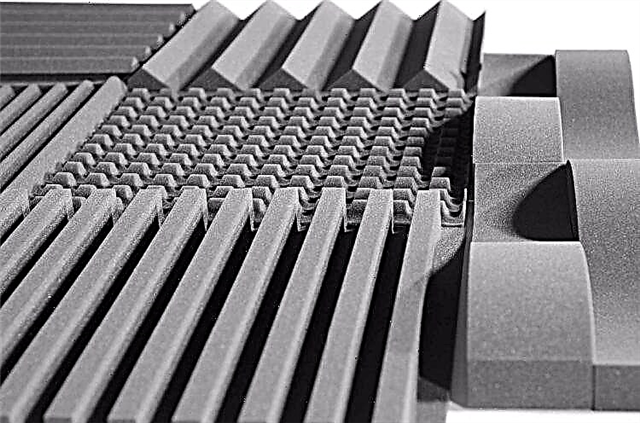Quickly and without consequences, only fresh, not yet frozen silicone is removed. Therefore, if during application the product falls outside the working area (on tile, bathtub, sink, floor or clothing), it should be quickly wiped with a sponge or rag.
 A fungus on silicone is the most common reason why it must be removed.
A fungus on silicone is the most common reason why it must be removed.
The difficulty of removing silicone depends on the composition and type of surface. The most difficult thing is to clean the porous material (concrete, marble, enamel, cast iron) or embossed tile (especially mosaic): with proper application, high-quality sealant adheres tightly to such coatings.
If you plan to re-apply the sealant, the working surface should be cleaned of the old layer especially carefully. The adhesion between the molecules of fresh and polymerized silicone is practically absent. Therefore, with poor-quality removal of the old layer, poor sealing is likely.
To clean the surface of dried sealant combine mechanical and chemical agents. In any case, you can’t do without physical efforts, therefore, they begin work with the mechanical method. At the same time, they try to gradually remove the most thick layer of silicone, since chemistry can dissolve only a relatively small layer.
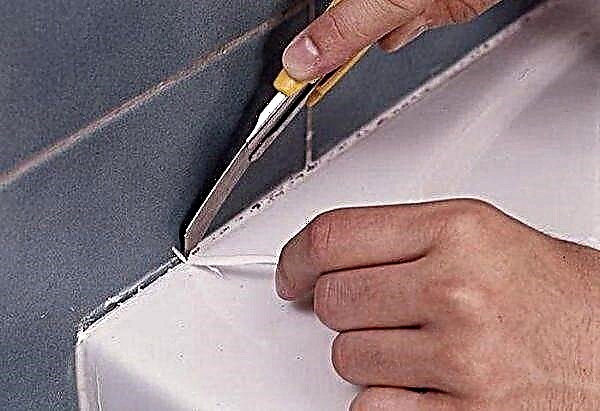
Mechanical way
To work, you need the following tools:
- sharp clerical or construction knife (you can purchase a special knife for embroidering silicone joints),
- blade,
- small spatula
- tweezers,
- flat screwdriver
- special plastic or wooden scrapers to remove the sealant,
- pumice.

Some of these tools may not be useful, but it is better to have them at hand: in practice, you often have to try different options to find the most effective one.
Stages of the work:
- Pre-thin layers of silicone are cut with a knife or blade. For this, longitudinal and transverse cuts are made between the surfaces and the adjacent layer of sealant. If the silicone is not very hard, you can try to remove it in one motion. To do this, longitudinal cuts are made whole and as long as possible.
- Incised edges are captured with tweezers or fingers and strips and pieces of old silicone are separated.
- Using a spatula or special scrapers (wood is preferred for acrylic surfaces), remove residues.
 Removing silicone residue with a glass scraper.
Removing silicone residue with a glass scraper.
Chemical methods
Since it is practically impossible to completely remove the old sealant in the bathroom in the previous way, mechanical cleaning is often supplemented by chemical treatment.
When choosing chemical products, it is important to consider the composition of the sealant. Household silicone sealants are acidic or neutral. Acidic - the most common and have a specific smell of vinegar when applied. When working with neutral silicone, the smell is almost absent. For effective removal of acid silicone, the active substance of the solvent should be acid, for neutral it should be gasoline or acetone.
Tools at hand
First of all, you can use paint and varnish solvents, which are at hand. The effect of the use of these fluids for each individual case may be different, so they must be tried on a specific silicone and on different surfaces. At home, to remove sealant, such tools may come in handy:
Gasoline galosh, white spirit
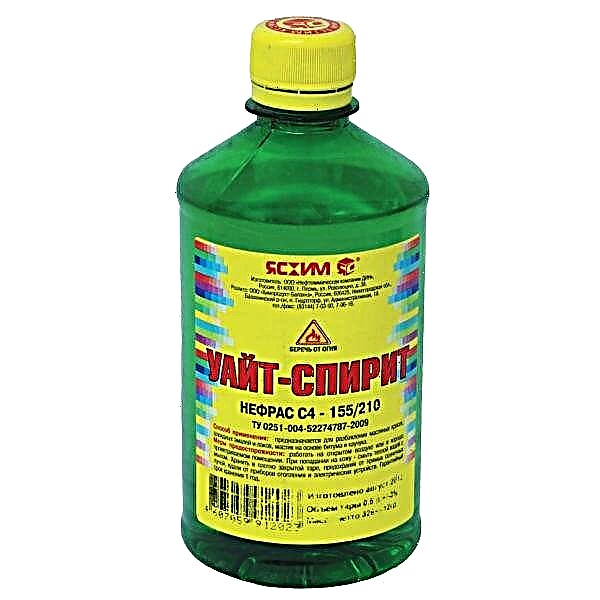
White Spirit (or Nefras) is a universal solvent with which you can try to soften an old sealant. With a liquid, a rag is abundantly moistened and passed through the desired areas. Leave for 5 to 10 minutes to absorb. If the product has worked, the sealant softens and resembles a gelatinous mass, which is easy to remove with a spatula or scraper. Other solvents may be tried in a similar manner.
White spirit works best on cast iron or enamel baths, but on acrylic surfaces it can be ineffective.
Vinegar + alcohol
Acetic acid and alcohol are very weak solvents and have little effect on silicone. But there are positive reviews about the use of a mixture of equal parts of vinegar essence (70%) and alcohol (50 ml each). Sometimes the composition is supplemented with 1 tbsp. l soda ash. The agent is applied from the spray gun and allowed to act for about 30 minutes. After softening the sealant, it is also removed with a knife. In its pure form, vinegar can process a thin layer of silicone remaining after mechanical cleaning. In some cases, this helps to remove residues faster.
Kerosene, gasoline and acetone can soften neutral type sealants, but they practically do not act on acidic ones.
Industrial Silicone Cleaners
Industrial products disrupt the structure of the sealant and cause its gradual destruction. Silicone solvents can be purchased at construction stores or car care stores.
The principle of removing sealant by different professional compositions is the same:
- After preliminary mechanical cleaning, the product is applied with a sponge or simply with a finger (always wearing gloves).
- After a certain time (should be indicated on the packaging), the remnants of the product, together with old silicone, are easily removed with a brush, plastic spatula or scraper. Often the necessary tools are included with the cleaner.
- Many industrial silicone solvents leave greasy marks on the surface, often yellow in color. They are treated with soapy water, kept for a while and washed. A laundry soap works well with which a sponge is soaped and greasy areas are treated. The foam is washed off, and the surface is wiped dry and finally degreased with acetone or white spirit, and then dried with a hairdryer.
Chemical products for removing silicone are available in the form of sprays, washes, gels or pastes. Positive feedback and recommendations received such funds:
- Tytan (Selena, Poland). The active substance is phosphoric acid. It does not have a pungent odor. Even dried silicone dissolves. The duration of the purifier is 12 hours. The drug is effective on embossed surfaces, so it can be used to clean tiles with a volumetric pattern. Leaves greasy marks.
 Tytan silicone remover. Universal car cleaner XADO Mottec Antisilicon (Ukraine) alcohol-based. Designed for degreasing and cleaning the surface of silicone and traces of adhesive tape. Suitable for acrylic and ceramics. It does not require rinsing and leaves no residue after drying.
Tytan silicone remover. Universal car cleaner XADO Mottec Antisilicon (Ukraine) alcohol-based. Designed for degreasing and cleaning the surface of silicone and traces of adhesive tape. Suitable for acrylic and ceramics. It does not require rinsing and leaves no residue after drying.
 Universal cleaner XADO Mottec. Soudal Silicone Gel Cleaner (Belgium) on a hydrocarbon basis. It is characterized by light application and a moderately pungent odor. The minimum duration is 10 minutes. It is applied only on dry surfaces. On acrylic, stone, ceramic and plastic, preliminary testing is desirable. Leaves greasy spots.
Universal cleaner XADO Mottec. Soudal Silicone Gel Cleaner (Belgium) on a hydrocarbon basis. It is characterized by light application and a moderately pungent odor. The minimum duration is 10 minutes. It is applied only on dry surfaces. On acrylic, stone, ceramic and plastic, preliminary testing is desirable. Leaves greasy spots.
 Soudal Silicone Hydrocarbon. Car Spray Body Antisil 770 (Greece) based on organic solvents - a universal tool for cleaning any surfaces. Safely removes residual silicone and bitumen, but re-processing may be necessary.
Soudal Silicone Hydrocarbon. Car Spray Body Antisil 770 (Greece) based on organic solvents - a universal tool for cleaning any surfaces. Safely removes residual silicone and bitumen, but re-processing may be necessary.
 Body Antisil degreaser. Dow corning (Dow Sil, USA) - a fundamentally new silicone-based solvent cleaner. Activates the depolymerization process of silicone. It is safe for the environment and any surfaces, does not change the color of painted products and leaves no residue. Available in aerosols (Dow Sil OS-2 series) and liquids for dissolving old sealants (Dow Sil DS-2025 series).
Body Antisil degreaser. Dow corning (Dow Sil, USA) - a fundamentally new silicone-based solvent cleaner. Activates the depolymerization process of silicone. It is safe for the environment and any surfaces, does not change the color of painted products and leaves no residue. Available in aerosols (Dow Sil OS-2 series) and liquids for dissolving old sealants (Dow Sil DS-2025 series).
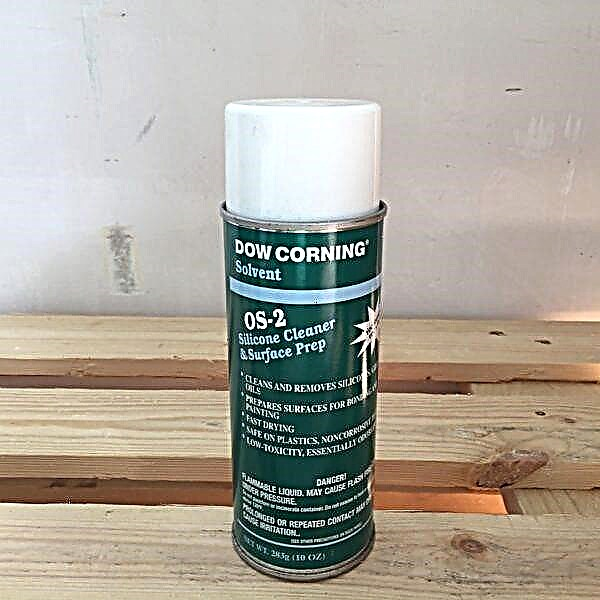 Environmentally friendly solvent aerosol Dow Sil OS-2. Solvent remover Penta-840. Removes traces of silicone from tiles, metal and acrylic surfaces. It is applied abundantly dampened with a sponge. The treated surface is covered with a film and held for several minutes. Sealant residues are easily removed with a sponge or improvised means. Harmful by inhalation, in contact with skin and eyes. Prolonged exposure may cause corrosion of metals.
Environmentally friendly solvent aerosol Dow Sil OS-2. Solvent remover Penta-840. Removes traces of silicone from tiles, metal and acrylic surfaces. It is applied abundantly dampened with a sponge. The treated surface is covered with a film and held for several minutes. Sealant residues are easily removed with a sponge or improvised means. Harmful by inhalation, in contact with skin and eyes. Prolonged exposure may cause corrosion of metals.
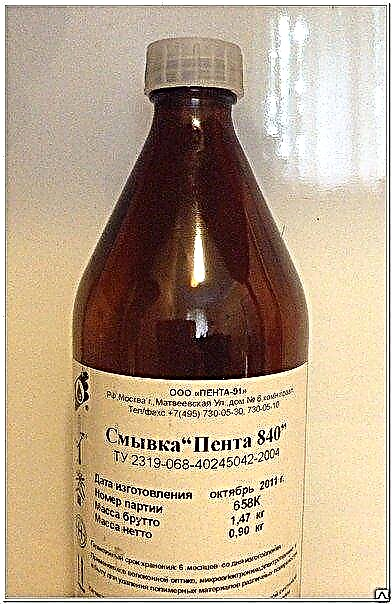 Penta-840
Penta-840
Best deals on silicone cleaners:
Note: Work with any solvents or industrial products can only be done with gloves and in a well-ventilated area.
How not to spoil the surface
In order not to subsequently have to repair plumbing or change the finish, all work to remove the sealant is done as accurately as possible and without rush. Acrylic products require special attention: with severe friction, they can be scratched even by the hard side of a dishcloth, and rough brushes are generally contraindicated on such surfaces. Therefore, when removing the sealant, safety measures should be taken into account:
- Work with a blade and a knife must be very careful to avoid injury and not scratch the walls, glass, floor or plumbing.
- A thin layer of sealant from acrylic coatings is safely rubbed with an eraser, wet pumice, aged sandpaper, wood sliver or a block of unprocessed but soft wood (for example, pine).
- Sometimes silicone is so hardened and stuck to the surface that it cannot be mechanically removed: it cannot be cut even with the sharpest blade. In such a situation, it is necessary to pre-soften the sealant with folk remedies or professional compounds.
- You should not risk it and try to tear off silicone by force: it can separate together with the top layer of a bathtub or a piece of tile.
- When choosing a silicone agent for an acrylic bath, special attention should be paid to the active ingredient of the solvent: caustic compounds can damage the surface. Ideally, the package should contain information about the possibility of using the product on acrylic materials. Acrylic surfaces cannot be treated with acetone.
How to remove acrylic sealant
Acrylic sealants can be water soluble and water resistant. But their main function is not sealing, but gluing. Compositions for internal work are porous and, as a rule, water-soluble. Therefore, in the bathroom, their use is limited to places where water does not get (you can glue various hooks, mirrors or shelves).
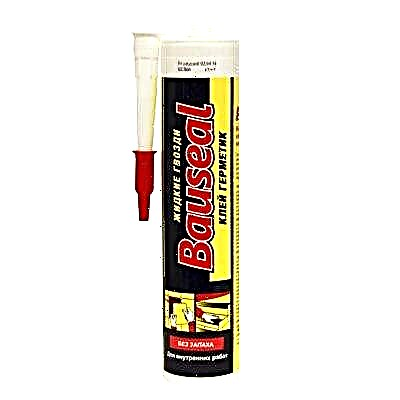
Waterproof acrylic sealants are designed for exterior decoration and construction work. In general, they are universal and, after complete drying, are not afraid of moisture, but constant contact with water has a bad effect on their properties. On waterproof acrylic glue, curbs (or baseboards) for bathtubs and washbasins are sometimes installed, which is not entirely correct.
Removing acrylic sealant is much easier than silicone:
- excess fresh glue is easily wiped with a sponge or cloth moistened with water,
- old dried composition is cut with a clerical knife or a blade,
- water-soluble acrylic is moistened with water until soft,
- from the edges of the acrylic bathtub, waterproof acrylic sealant can be removed with polyurethane foam, acetone, nail polish remover or a white spirit type solvent,
- residues of the composition are removed with a wooden scraper or plastic cleaner for windows,
- acrylic sealants do not leave greasy marks and stains after removal, therefore additional solvent treatment is not required.
How to replace sealant
First of all, it is important to choose an original product from a trusted manufacturer. Bath formulations should contain a biocide (antimicrobial component). It is advisable to purchase sanitary silicone sealant in specialized stores: as a rule, storage conditions are observed there and less likely to buy a fake.
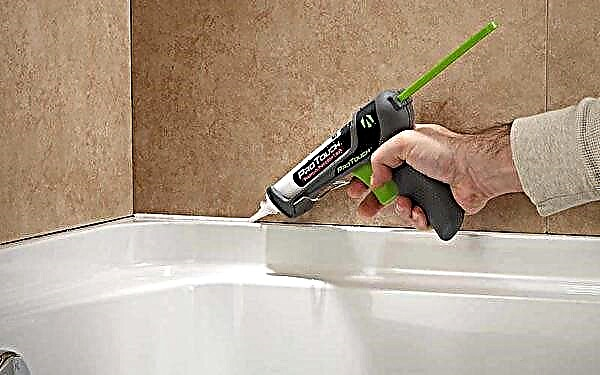
Technology for applying a new layer of sealant:
- Degrease the working surface with any available means and dry thoroughly.
- To prevent unwanted seals from entering the surrounding areas, the area around the work area can be masked with masking tape.
- A tube of sealant is prepared for operation according to the instructions.
- Gently apply the composition.
- A seam is formed around the entire perimeter of the application, removing residual sealant. To obtain a smooth, uniform joint without defects, it is better to use not a finger, but a spatula, a ruler or an old payment card.
- Before operation, wait until the sealant has completely dried (from 12 to 24 hours).

Note: The sealant must not be applied on wet surfaces. Even if the silicone adheres to the base, underneath it is guaranteed to begin to grow mold.
In practice, even high-quality formulations with antifungal additives can be affected by mold. This is possible in a number of cases:
- violation of sealant application technology,
- purchase of a fake,
- favorable conditions for the development of the fungus (increased humidity, poor ventilation).
If each time a fresh sealant is quickly covered with mold, the listed reasons should be excluded in turn (purchase the product in another store or from another manufacturer, check the humidity in the bathroom).
Advice! If you need a master to repair the bathroom, there is a very convenient service for the selection of specialists from PROFI.RU. Just fill out the details of the order, the wizard will respond and you can choose who to collaborate with. Each specialist in the system has a rating, reviews and examples of work that will help with the choice. It looks like a mini tender. Placing an application is FREE and does not oblige you to anything. It works in almost all cities of Russia.
If you are a master, then follow this link, register in the system and be able to accept orders.
When to remove
- The sealant is not applied correctly, which prevents the protection against moisture penetration. Then the inaccurately applied layer is removed, the seam is filled again with sealant.
- Over time, the sealing layer wears out and deteriorates; it can change its color due to burnout or severe pollution. The seam may crack, which will significantly impair its moisture-proof characteristics. A damaged layer must be removed immediately.
- Even if antiseptic additives are included in the sealant, during prolonged use in conditions of high humidity, for example, in the bathroom, microorganisms can multiply on the surface, which is why mold quickly appears. The contaminated layer must be removed as soon as possible, since mold growing in dampness can worsen the well-being of apartment residents.
- During the repair, the sealant accidentally lands on improper surfaces.
How and how to wipe off sealant
Immediately after application, the substance is difficult to see on the surface, but after a few hours it becomes transparent from transparent. It becomes clear on which surfaces the removal of splashes, stains or the alignment of seams and joints will be required.
The dried or hardened silicone compound can be removed mechanically by scraping with tools at hand.
The method is used when solvents or detergents cannot be used.
Tools
- Construction spatula. Thanks to the wide handle it is convenient to use for removal of even strongly dried sealant. The edge of the tool must be intact, and if there is a chipping, it is useless and even dangerous to use, there is a chance of damage to the surface.
- Building scraper. Helps to quickly remove the remains of glue and not to destroy a tile.
- Razor blade. For the most inaccessible places, small pollution quickly erases. Due to the small size of the blade is not always convenient to use, with careless handling, you can cut your hands.
- Shoe knife. Helps clean off very thin layers of glue.
- Screwdriver. Sealant is removed in hard-to-reach areas. In order not to damage the tile, you need to work without strong pressure.
- Tongs, tweezers, pliers. The tools can capture the exfoliated parts of the sealant, if it can not be done with your fingers.
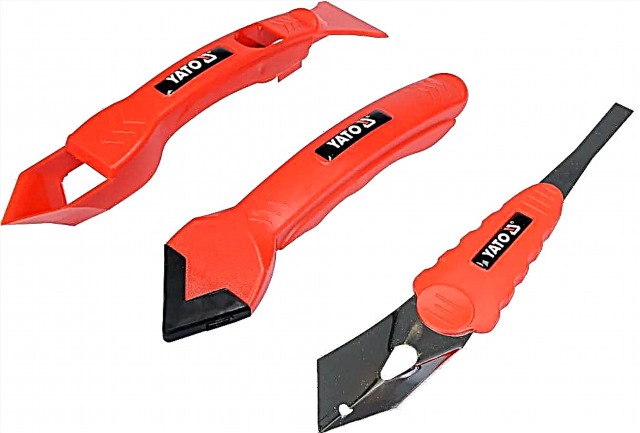
How to remove
Silicone based sealant is characterized by the highest degree of adhesion to any materials. It solidifies at room temperature very quickly. Due to the fact that silicone interacts very poorly with various solvents and chemical compositions, it is rather difficult to clean it; here you will need to use special means to remove the sealant. However, even their application does not always bring positive results, because the process of removing the adhesive composition in each case can be performed in different ways. You should always remember this before you clean the silicone sealant, otherwise you may damage the material.
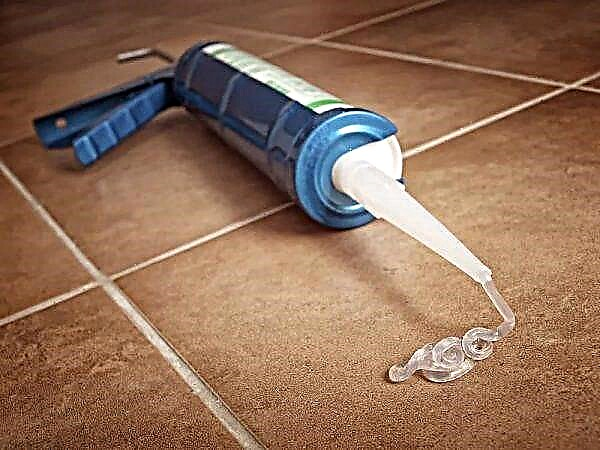 Silicone based sealant
Silicone based sealant
There are several ways in which you can remove the remnants of the silicone compound. Most often, sharp objects are used for this purpose, with which the glue is scraped off, it can be a screwdriver, a knife and the like. But this method has one big minus, after such an impact, the external attractiveness of the processed surface spoils. Therefore, this method is reasonable to apply only in cases where the appearance of the processed material is not important.
There is another method that allows you to remove the silicone sealant, is the use of simple salt. Such a product is in every home. To do this, it is necessary to slightly moisten the salt with water, then put it on a clean cloth, it is better to take the gauze obtained with a tampon three in the place where the pollution from the adhesive composition has formed.
During wiping, it is unnecessary to apply a lot of force, while the movements should be circular. After the cleaning process is completed, greasy spots remain on the surface, they can be removed using a simple dishwashing detergent.
 The use of ordinary salt
The use of ordinary salt
There are other ways to clean the glue residue - a chemical agent for removing silicone sealant. Many of these tools allow you to quickly and accurately remove excess adhesive from surfaces. For example, with the help of White Spirit, you can quickly remove glue residue from an acrylic bathtub, tile, plastic and other surfaces.
However, such a tool can not be used on those surfaces that are painted. It is easy to use such a preparation, we moisten the swab and then wipe it with the place where the sealant was applied. After forty seconds, then the remaining softened silicone is removed from the surface with a sharp knife or blade.
However, in the place where the adhesive was, a greasy stain remains, it can be removed using the same solvent, moisten a cloth and wipe the surface. In the case when the glue was applied not so long ago and has not yet had time to completely absorb and solidify, it can be removed using acetone or ordinary table vinegar.
Given the sharp specific smell of such products, you need to take care of good ventilation in the room, and a respiratory mask would also be helpful, because acetone can cause an allergic reaction.
Currently, on the shelves of shops you can see various products that allow you to soften and rinse silicone-based sealant. They allow you to remove glue from various surfaces, however, when choosing them, you need to carefully read the instructions so that later, when using, do not cause damage to the treated surface. Most often, the following tools are used:
- Lugato and Penta 840.
- Dow Corning OS-2 and Antisi.
- Gasket Remover and Quilosa.
 Chemicals
ChemicalsAttention! Preparations from a foreign manufacturer are better, but their cost is much higher. Before using one of them, carefully read the instructions.
Remove sealant from the bath
If you are interested in how to remove the old silicone sealant from the bathtub, especially if it is located at the joints between the walls and the pallet, in these places the surface becomes dark in color or if the composition has peeled off and a gap appears through which water flows. Then you can try to get rid of silicone mechanically, that is, with a screwdriver or knife to clean these places.
You can also use pumice for this purpose. First of all, you need to remove the entire layer, for this it will be necessary to pick up the edge with a screwdriver and then try to tear off the entire, well, or at least in those places where it is possible to do it.
In the event that the sealant to be removed is difficult to tear to the end, try cutting it. To do this, put the knife into the joint between the pallet and the wall. But how to remove the leftovers later, this is another question, for this you can use a pumice stone and try to clean them in circular motions.
Stripping work must be done very carefully so as not to damage the surface. To remove silicone from the bath, you can resort to using chemical compounds and already with their help try to wash off the dried glue.
 We clean the sealant with the bath
We clean the sealant with the bath
Remove the tile sealant
If you do not know how to remove silicone sealant from the surface of the tile, then here the whole process consists of several simple steps. First you need to cut off the entire excess layer of adhesive. Do this very carefully so as not to scratch the surface. After the entire layer is removed, you can use some chemical agent, for example, White - spirit. Wipe the remaining silicone with a cloth dampened with spirit until it softens, then it can be quickly and easily removed.
Attention! In order to remove the already softened sealant from the tile, you must use a wooden scraper, so you will not leave scratches on the surface.
Gasoline or kerosene can also be used to remove silicone. These substances must be rubbed into the surface of the tile until the hardened adhesive composition is soft. Also, for this purpose, you can use the drug Penta 840, although in this case you need to first learn about how the tile will respond to such an effect. In the event that the tile is not resistant to such a drug, then it will crack and harden.
 We clean the silicone from the tile
We clean the silicone from the tile
Remove sealant from plastic
It is not difficult to remove the adhesive hardened composition from plastic, because its adhesion to such a material is quite low. Plastic pallets, pipes and other items can be quickly cleaned of glue, if they are moistened with a solvent and wait about an hour, or maybe less. The remaining traces of the removed silicone can be removed using a regular degreasing agent.
Remove sealant from the glass
We learned how to remove silicone sealant from a tile and a bathroom, and now we will talk how to remove it from a glass. It is best to use a blade for this purpose. True, in this case it can take a lot of time to remove the silicone, and the possibility that the glass surface will be scratched is also possible.
It is best to remove the glue from the glass surface using white spirit, you can also use gasoline. These funds can be obtained without problems, and they are inexpensive. The removal process is simple, we wet the fabric in spirit or gasoline and wipe the surface until the hardened sealant becomes soft.
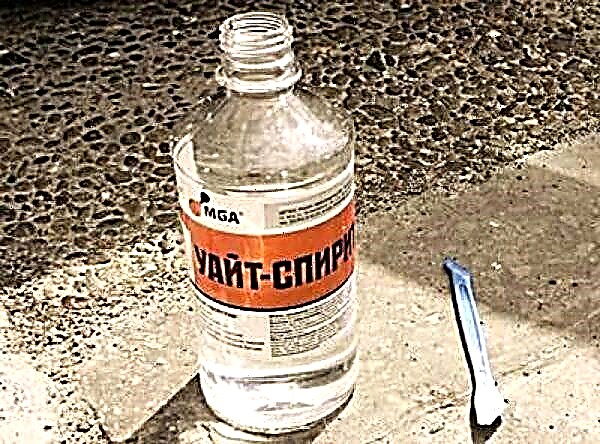 White Spirit
White Spirit
Remove sealant from clothing
If after the silicone glue got on the clothes, you will immediately take measures, then removing the composition will not be particularly difficult. In this case, you should pull the fabric in the place where the glue got and then pick it up and remove it with a solid object. But if the sealant has already absorbed into the fibers of the fabric and has frozen, then here you have to try to remove it.
You can resort to clean vinegar - the part that is dirty with sealant must be soaked in vinegar, then remove the glue with a clean cloth. Also, in order to remove silicone from clothing, you can use technical or medical alcohol. To do this, pour a little alcohol on the stain, and then rub this place with a toothbrush. Under this influence, the glue will slowly begin to roll out of the fibers and will curl up into lumps.
Remove the sealant from the hands
If silicone glue gets on the skin of the hands, in this case, salt will help get rid of it. To do this, pour warm water into the container and dissolve the salt there, then lower your hand into this solution and rub the place contaminated with glue with a pumice stone. But only the first time it is unlikely that you will be able to get rid of the sealant on your hands, so the procedure with salt will need to be repeated again.
You can also soap your hands with household soap and then rub the dried glue with a pumice. Another option is to wipe the stain on the hand with sunflower oil, which must be preheated, then wash your hands with laundry soap. That's just these methods are ineffective, but, in extreme cases, you can resort to the help of chemicals.
Tips
- Glue stains can be removed with an iron. First you need to apply a solvent to the dried adhesive, then put paper on top, heat the iron and go over it on paper.
- Silicone can be removed from clothing with the help of cold. Put clothes with a glue stain in a plastic bag and put it in the freezer for three or more hours. Then remove the clothes from the bag and very carefully remove the adhesive.
- Silicone residues on clothing can be removed with hydrogen peroxide.
Conclusion
Considering that it is quite difficult to remove silicone sealant from the surface, it is therefore better to worry about it before contacting the surface, clothing and hands when working with it. To do this, you can put on an apron and rubber gloves, and before proceeding to seal the joints, the surface on which glue should not get can be sealed with masking tape.
You can learn how to quickly remove silicone sealant from this video:
Cleaning procedure
- First, the top layer of silicone is removed with a knife or blade. For this, a longitudinal and transverse section is made between the treated base and the adjacent layer of the seam. Slightly hardened waterproofing is cut off with one maximum long longitudinal movement.
- If it was not possible to completely remove the silicone from one time, it is necessary to grasp the notched edge with your fingers and separate all the pieces one after the other.
- Residues are removed with a spatula or scraper tool.
For acrylic surfaces it is better to use wooden spatulas.
How to wash silicone sealant with chemistry
The mechanical method cannot completely, so it is often combined with chemical treatment.
The solvent is selected taking into account the composition of the sealant.
- Acid-based substances emit a vinegar smell, you can remove them with an acid-based solvent.
- Neutral silicone adhesives do not have a pungent odor and dissolve easily with gasoline, acetone or other organic solvents.
Vinegar
Acidic sealants have a characteristic smell of vinegar.
Sharp aroma is the main sign of budget sealants.
Their traces are easily removed with vinegar essence (70%). If necessary, the site is treated with vinegar several times.
Work with essence is carried out with gloves with open windows or forced ventilation turned on.
White spirit, acetone
White spirit or other solvents such as acetone can easily remove traces of quickly hardening sealants. Neutral sealants are washed off, the main components of which are amines and alcohols. They can easily clean any surface without damaging it.
A cotton swab is dipped into the solvent, the area is wiped. After drying, the cleaning is repeated if necessary. When the sealant softens to a porridge-like mass, it is easy to remove with a kitchen washcloth.
White spirit cleans well cast-iron or enamel baths, but on acrylic surfaces it is ineffective.
Professional solvents
- Tytan (Selena, Poland). Phosphoric acid based sealant solvent, odorless. Can easily dissolve dried silicone. The cleaner operates for 12 hours. Effectively cleans relief surfaces, therefore it is often used to clean tiles with a three-dimensional pattern. Oily traces remain from the product.

- XADO Mottec Anti-Silicone (Ukraine). Universal alcohol cleaner for cars. It is used for degreasing and cleaning substrates from adhesive tape and sealant. Can be used on ceramic and acrylic materials. It does not need rinsing, after processing there are no traces left.

- Soudal (Belgium). Hydrocarbon based silicone remover. Available in gel form. Easy to apply, has a mildly pungent odor. Effective after 10 minutes. It can be applied only on dry substrates. Before using on ceramic, acrylic, plastic and stone substrates, it is better to test the product in an inconspicuous area. After processing leaves traces of fat.
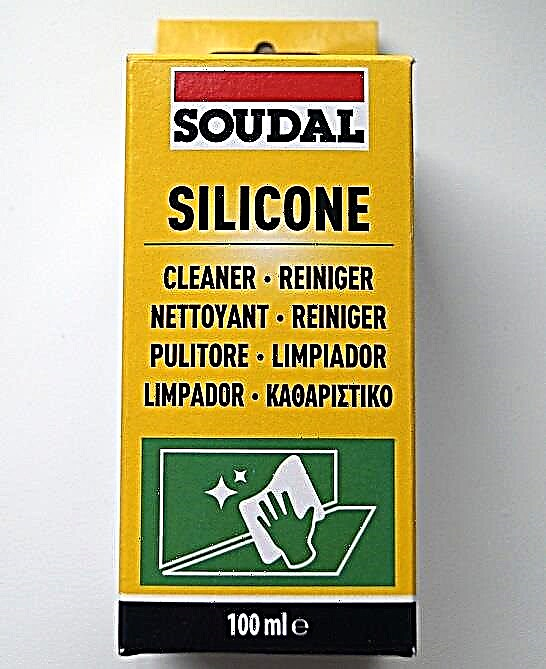
- Body Antisil 770 (Greece). Car wash, which is available in aerosol form. Cleans any base. Based on organic solvents. May dissolve various sealants. For persistent contamination, re-treatment may be required.

- Dow corning (Dow Sil, USA). Silicone based solvent. Starts the process of depolymerization of the sealant. Safe for all surfaces, including painted. Does not change the color of the dye, does not leave spots. It is produced in the form of an aerosol or liquid. The latter is suitable for removing old traces of silicone.
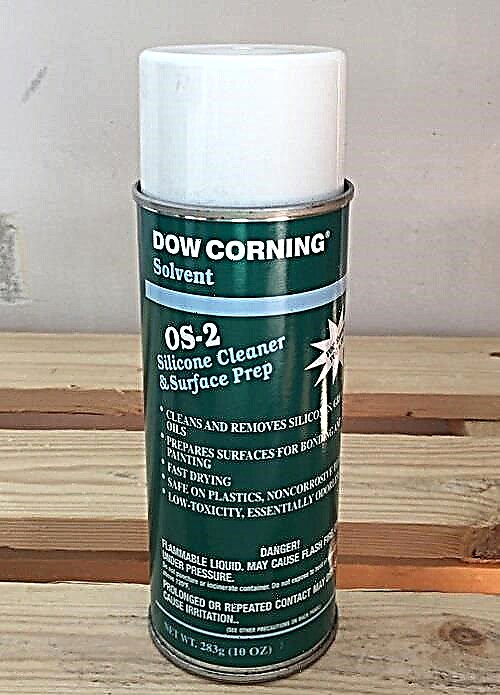
- Penta-840. Cleans tiles, metal and acrylic substrates from waterproofing. For application, a washcloth is used. After washing, the surface is covered with oilcloth for several minutes. Softened silicone is removed with a sponge.
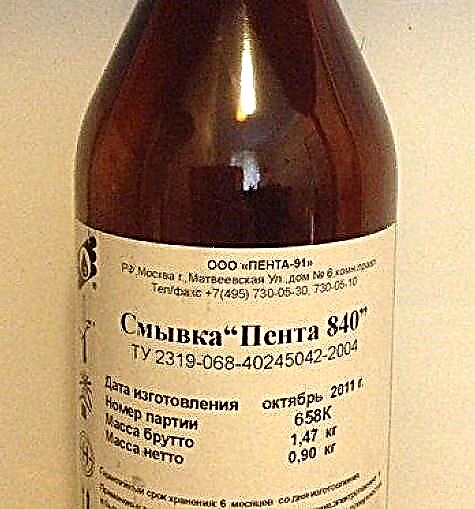
Due to the prolonged exposure of the flush to the metal, corrosion can begin. Avoid contact with skin, eyes and respiratory tract.
How to remove sealant from a tile (tile)
- The spatula or knife cuts off the protruding part of the seam as close to the base as possible. The seam between the bowl and the wall must be expanded.
- Solvent is selected. Any chemicals may be taken, except for products containing coarse abrasive components. The solvent is wetted with a sponge or a clean cloth that is applied over the dirt.
- When the silicone softens, the traces can be removed from the tiles in the bathroom, and the surface wiped dry.
Cleaning plastic from sealant
The smooth surface of the plastic has low adhesion, so the adhesion of sealants with it will be minimal.
- Large flows are cut off from the plastic base.
- The remaining spots are softened and removed with a suitable solvent.
If you need to remove the layer from the plastic in the bathroom, a substance is taken that will not damage the bowl of the bathtub or the tray.Before cleaning, the effectiveness and safety of the solvent is checked in an inconspicuous area. Softened residues are cleaned with a soft abrasive or just a hard sponge. If the removal failed the first time, all actions are repeated.
Laundering from clothes
It is easiest to wash silicone off clothing immediately after contamination. The non-solidified mixture is quickly removed from the fabric, the remains are wiped with a rag, and if necessary, the thing is washed. If the product has dried, the following steps:
- the thing is laid out on a flat surface, the contaminated area is straightened,
- with a thin tool, the dried substance is picked up and removed from the material,
- the stain left on the clothes is rubbed with a sponge dipped in vinegar or alcohol,
- after a while, the stain is again wetted with solvent and cleaned with an old toothbrush, the spools that appear in this case are removed manually
- applied chemistry with silicone is washed off with a warm soapy solution.
Hand Removal
The sealant that has just got into your hands is washed off with hot water and soap.
If it begins to dry, you can soften it with acetone or gasoline, and then wipe it with pumice. Effectively removes medical or those from the skin. alcohol. The sponge is wetted in it, the silicone is removed by careful translational movements.
From organic means, you can use sunflower oil. The oil itself does not cleanse well, so it is slightly warmed up in a saucepan and washing powder is added. After using the product, the hands are washed thoroughly with running water and soap.
Effectively with silicone, vinegar diluted in water copes with a ratio of 1: 1. After removal, the hands are washed with warm water and laundry soap.
Glass cleaning
Due to the increased fragility, the glass must be cleaned carefully. Intense movements and rough abrasive substances can, if not break, then scratch the surface. Old stains are best removed with washes that have minimal mechanical effect on the glass.
If an abrasive is needed, salt is used. Coarser powder products may damage the substrate. Alcohol sealants are removed from the glass with ethanol.
What is silicone sealant
Silicone is a universal substance, soft, plastic, with excellent sealing properties. Silicone-based preparations process all kinds of seams to seal, for example, in bathrooms, pools. Home aquariums are made using silicone sealant, glass is installed on the sealant in the interior doors and windows - the scope of this material is quite wide.
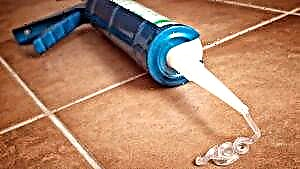
If during work with the sealant some surface got dirty, it is very easy to remove the still-frozen residues - just wipe the surface with a rag and wipe with any solvent. With hardened material, everything is much more complicated, since safe solvents have not yet been invented for him, and the question of how to clean the surface of the sealant without effort remains open.
On the video: how to work correctly with silicone.
Mechanical
For mechanical removal of residues, any suitable tools may be used. The glue is well removed with a small spatula, scraper, you can use sandpaper, a shoe or office knife, a screwdriver, salt - everything that can handle the sealant.
As practice shows, it is most convenient to cut off protruding silicone flows with the sharp tip of a shoe knife. An office knife can also be used, however it is very fragile, you need to work very carefully.

As an abrasive substance, you can use ordinary table salt due to its availability and effectiveness. It helps to remove pumice sealant, you can also use a metal washcloth for dishes, a plastic scraper and even an old credit card. The main thing is to work carefully and not damage the surface on which the sealant is applied.
The algorithm of work is simple: first you need to remove large excess sealant with a knife from the surface to be cleaned, after which we remove the remaining silicone glue using abrasive substances. If salt is used, it is applied to a cloth and slightly moistened with water. Sealant is wiped with light circular motions until completely removed.
After removing the material, spots may remain on the surface that can be removed with a household dishwashing detergent. A glass cleaner is also suitable.

Chemical
In construction stores, you can find different types of solvents to remove sealant from surfaces. However, you need to immediately clarify - the hardened silicone sealant does not respond well to solvents, with their help it will not be possible to completely remove large residues, but to soften - yes. After that, cleaning the surface will be much easier.
In order to choose the right solvent, you need to know the composition of the sealant that was used. Ideally, you need to buy sealant and liquid to remove it in one store. Silicone sealant can be one- or two-component. A two-component product is mainly used in production and is rarely used in everyday life.
One-component sealants are divided into agents with an acidic and neutral base. Neutral sealants, in turn, are: alcohol, amide, oxide. Acid silicone is well softened with concentrated vinegar (at least 70%), alcohol-based sealant can be dissolved by it, either technical or medical.

For neutral materials, any household solvent is suitable. There are chemicals specially designed for dissolving sealants, for example, Penta-840 or Antisil. They are universal, so if the composition of the sealant is unknown, it is necessary to use just such chemicals.

How to clean the remnants of sealant in the bathroom
How to remove silicone sealant at the joints and joints of the bathroom? This is not easy to do - the work is painstaking and unpleasant. First you need to prepare everything you need for work:
- knife (clerical or shoe),
- flat screwdriver
- pumice or salt,
- clean rag.
The old sealant from the bath should be tucked up in any accessible place and try to peel, where possible, around the entire perimeter. After the repair is completed, it is necessary to carefully remove or mask its consequences.

A good sealant is unlikely to fall off completely from the bath, so it must be cut along with a thin knife, and then clean the seam. Next, with a piece of pumice in a circular motion, remove all traces of silicone. At the end, you can wipe the seam with solvent or vinegar.
Fresh silicone sealant from the bath is well removed with white spirit and concentrated vinegar. If it has already hardened, the solvent is applied overnight.

How to clean tile
With tiles, large residues of the material are cut with a knife. In this case, it is better to use a clerical knife - it is thin and sharp. Care must be taken not to scratch the tiles. Any solvent available can be used to soften the residues, after which they can be easily cleaned with a clean rag.

It is also possible to remove the silicone sealant from the tile remaining after sealing the joints with a wooden or plastic scraper. To soften, you can use kerosene, which rub the surface of the tile to obtain the desired result. A dishwashing detergent is also suitable for this purpose, but it is not as effective as kerosene or solvent.
The tile cleaning algorithm is as follows: a clean cloth is wetted with a solvent, after which the place of contamination is wiped. After a few minutes, the softened sealant is removed with a knife or scraper. If a stain remains, it is rubbed off with a cloth moistened with solvent. Rinse the cleaned area with a detergent solution.
How to clean a plastic and glass surface
How to wipe off silicone sealant if it gets on plastic, be it a shower cubicle, a pipe or other similar surface? Oddly enough, it is easier to remove the hardened sealant from plastic than from other surfaces, since silicone adheres poorly to it. Can be cleaned with a suitable solvent. The product is applied to a contaminated place and softened silicone is rubbed with a cloth in about an hour.
How to wash sealant from glass? For mechanical cleaning, a thin sharp blade is suitable. True, such work will take a lot of time, and the probability of damaging the glass surface is high. Solvent is best. More precisely, white spirit or gasoline is a cheap and affordable means.

The algorithm is the same: moisten contaminated areas, wait about an hour and wipe off the pollution.
How to wash clothes and wash hands
How to remove silicone sealant from clothes and hands? If the material got on the surface of the clothes, you need to act quickly - it’s easier to remove fresh silicone. Pull the fabric in the place where the sealant got, pick it up with a hard thin object and remove from clothing. Already dried silicone sealant can be removed from clothing using vinegar - soak the contaminated area, wait a few minutes and remove the residue with a clean cloth.
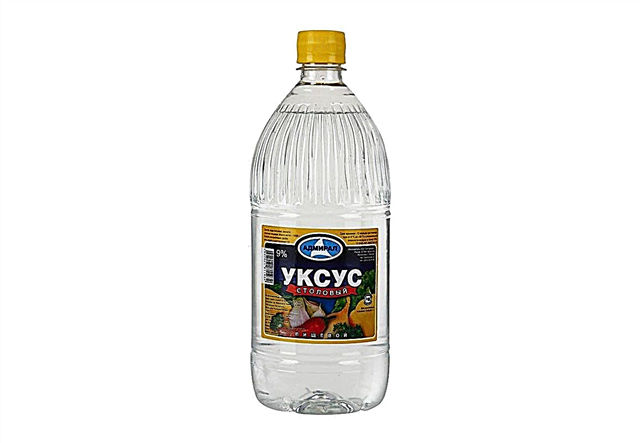
Technical or medical alcohol is also used. A little alcohol is poured onto the stain, after which the stain is gently rubbed with a toothbrush. The glue begins to soften little by little, to form into spools that are brushed off the surface with a brush.

Silicone sealant can be removed from the surface of the skin with salt and pumice. You need to pour warm water into any suitable container, dissolve the salt there, lower your hand and gently wipe off the glue with a piece of pumice. The procedure for removing glue residues from the hands takes a lot of time, it will most likely have to be repeated several times.

To clean your hands of silicone, you can soap them with soap and rub them with a pumice stone. Both methods work, although their effectiveness is poor. For quick cleansing of the skin of the hands you need to use suitable chemicals.
Features
Silicone based sealant is suitable for use with different surfaces. It has increased adhesion to many materials. Due to its properties, the sealant is very often used for small jobs or major repairs.
It freezes silicone in the air pretty quickly. If the sealant is on the surface, it is best to remove it immediately. Once the silicone has hardened, removing it will be much more difficult. Silicone on surfaces that have been machined for a long time is difficult to remove, it is especially difficult to remove it from porous surfaces or tiles, since it is already deeply ingrained in the material.


It is difficult to wash silicone sealant, even using special means to remove it. For cleaning, you can apply mechanical cleaning and try to remove contamination. It is difficult to completely remove the sealant mechanically, it is also necessary to apply dry cleaning and try to wash the silicone with white spirit, acetone or other means.
When cleaning, you should always remember that this should be done carefully, being careful not to damage the work surface.
The mechanical method is suitable for surfaces that are not visible at first glance. Otherwise, in the event of minor scratches, the appearance of this material may be damaged.
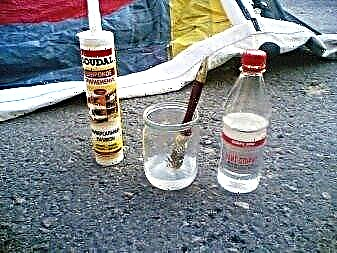

Cleaning Rules
When sealing joints or cracks, while protecting surfaces from the adverse effects of aggressive substances, a sealant is often used to glue structures. This material has successfully replaced obsolete putties and grouts, due to its properties and excellent adhesion, it is much easier to process joints or repair cracks.
Sinks, bathtubs, showers - this is not a complete list where silicone sealant is used. Using this material, you can seal the joints between the bathroom and the wall, glue the walls of the aquarium or seal the joints in the shower.
When working with the material you should know how to quickly clean it from any surface. During operation, excess silicone should be wiped off immediately, otherwise the sealant will harden very quickly and remove the excess will be problematic.
When sealing joints, glue can get on clothes and stain them. First of all, you should protect yourself from such pollution and work in special work clothing. If the sealant does get on the fabric, you should know how to remove it from the surface.
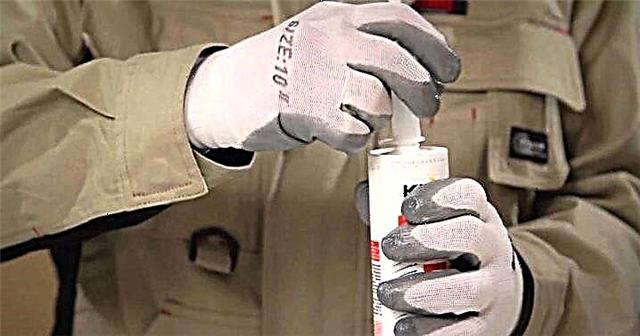
If the contamination is fresh, substitute the contaminated area under hot water and remove it. In the case when the sealant has already hardened, such processing will not give a result.
Silicone sealant is used to repair a motor in a car. Often silicone gets on car covers. To clean the cover, as for any fabric surface, it is better to immediately remove fresh contamination. When using aggressive chemicals, it is likely to damage the tissue. Solvent is applied to the contaminated area and left to soak for 30-40 minutes. The impregnated material is cleaned with a brush. After that, the fabric is washed by hand or in a washing machine.


If it is undesirable to use a solvent, you can use another method of removing the sealant:
- clothes or other cloth are laid out on the surface,
- the fabric should be stretched a little,
- take a scraper or a non-sharp knife and remove the silicone from the surface,
- a trace of oil is wiped with alcohol or vinegar,
- the fabric is soaked for 3 hours and then washed by hand or machine.
Choosing a silicone sealant for repair work take into account which surfaces it is suitable for. Alkaline, acidic and neutral sealants can be found in the store. When buying an acidic sealant, you should be aware that they should not process metal surfaces. The letter “A” will be written on its packaging, which means that it contains acetic acid, which can lead to corrosion of the metal.
Also, it should not be used when working with marble surfaces, cement. For such materials it is better to choose a neutral sealant. It is combined with any surface.


Suitable remedies
Silicone needs to be removed not only during its application.
It is deleted if:
- when the old sealant has already fallen into disrepair, lost its complete seal,
- during operation, it turned out that due to a violation of the rules there was no complete sealing,
- mold, fungus,
- if the surface was accidentally smeared.
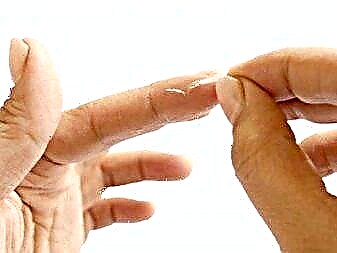

The sealant penetrates very deep into the material, because of this it is very difficult to remove it from the surface, especially when it has been in contact with it for a long period.
There are many ways to remove silicone. For some surfaces it is better to choose a mechanical method. This method should not clean glass surfaces, tiles, bathtubs made of acrylic or enamel, otherwise you can easily spoil them. The mechanical method is suitable for cleaning a surface that is not visible, since there is a chance of damaging the surface during cleaning, scratches may remain.
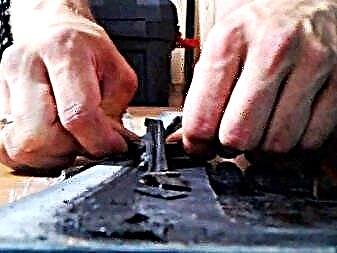
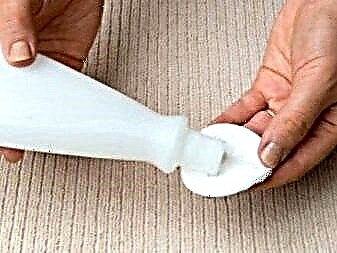
In order to remove the old layer of sealant, you should take a knife and pick up a seam with it. After the top layer of silicone is cut off, the sharp end of the knife removes the remains of it and cleans the treated surface. For cleaning, you can take sandpaper or pumice. The surface must be cleaned carefully so as not to scratch or damage it.
Silicone is removed by special means. You can purchase sealant in the form of a paste, cream, aerosol or solution. Let us dwell on some of them.

Lugato Silicon Entferner - This is a special paste with which you can easily get rid of dirt on many types of surfaces. The paste well cleans the sealant on glass, plastic, tile, removes dirt from acrylic surfaces and enamel. Suitable for metal surfaces, concrete, stone, plaster, well removes glue from wooden surfaces. To remove the sealant, remove the silicone layer with a sharp knife, its thickness should not be more than 2 mm.A paste is applied to the surface for 1.5 hours. With a wooden spatula, the remaining silicone is removed. The surface is washed with detergents.


Sili-kill removes dirt from brick surfaces and concrete, ceramics, metal, glass. When used, the top layer of sealant is cut off, and this agent is applied to the surface for half an hour. After it should be washed with soapy water.
Penta-840 - This is a wash to clean the sealant from surfaces made of metal, concrete, glass, stone. With this tool, you can process cast iron bathtubs and tile. This tool is checked in a small area. To do this, it is applied for several minutes to a part of the surface and inspected if everything is in order. After checking, apply a sealant to the sealant. After half an hour, the silicone swells and is removed with a sponge.


Dow Corning OS-2 It is used to clean silicone from glass, metal, plastic, and ceramics. The top layer of sealant is removed. This tool is applied for 10 minutes. Using a damp rag or sponge, remove residue.


If these tools are not suitable, other methods are used. The simplest is using ordinary table salt.
This method is used for the delicate removal of silicone or grease stains from it. You should take a piece of gauze or swab, moisten it slightly and put salt inside. Such a salt pouch should rub the surface, while it should not be rubbed strongly, the movements should be circular. When the silicone is removed, a greasy residue remains on the surface, which is removed with a dishwashing detergent.


Silicone can be cleaned from the product and any surface by chemical means. Such products help get rid of silicone quickly and easily. You can take white spirit for such purposes. With its help, the adhesive composition is removed from tiles, ceramics, cast iron, glass.
White spirit is not used on a painted surface. When using this product, it is applied to cotton wool or gauze and clean the contaminated area. After a few minutes, when the silicone is already soft, it is removed with the tip of a knife or blade.


You can remove contamination with acetone. Before use, it is applied to a small area. If the surface remains unchanged, acetone can be applied to the entire seam. Acetone is more aggressive than white spirit and has a strong odor. The liquid is applied to the seam and wait 15-20 minutes until it softens and loses shape. Residues should be removed with a cloth.
Do not use a plastic cleaner, otherwise acetone may dissolve the plastic surface. Use it for products from tile, glass, cast iron.
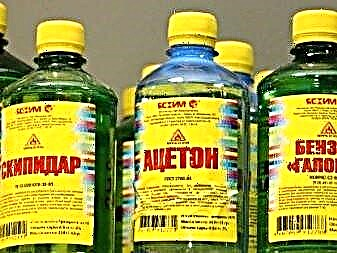

After processing, an oil stain remains on the surface, which can also be removed with acetone or mineral spirits using table vinegar. It has a sharp specific smell, so you should work with it in a respiratory mask and ventilate the room well.
Other solvents such as kerosene and gasoline can also be used. Sometimes these products can cope with pollution no worse than expensive purchased products.
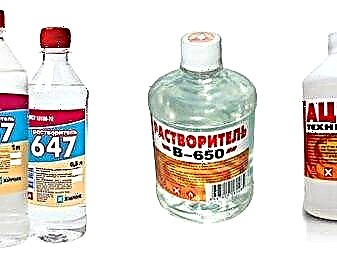

How to clean?
When processing joints and seams in the bathroom with sealant, it should be understood that after some time the old silicone layer may become unusable. Mold appears at the joints and seams, which can no longer be removed; therefore, remove the old sealant layer and fill the seams with a new grout. To remove the old layer from the tile, you should take a knife and cut off the top layer of silicone. The screwdriver can clean the gaps between the tiles. After the seams were cleaned mechanically, the cracks are recommended to be cleaned with a vacuum cleaner. Solvent is applied to the treated surface; after it is softened, it will become easier to clean silicone with a wooden or plastic spatula. It takes two to twelve hours to soften the silicone. More precisely should be indicated on the packaging.
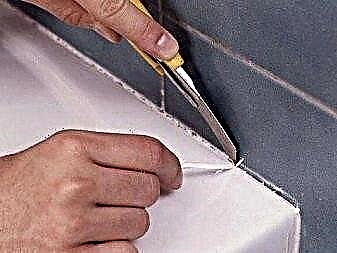

You can remove hardened silicone with gasoline or kerosene. The product is applied to the surface and rubbed a little, then you should wait until the adhesive composition becomes soft. To remove the silicone, you can try Penta 840. Before using it, you should pre-treat them with a small part of the tile. If you do not check the drug in a small area, cracks may appear on the tile, as the tile is not always resistant to the drug. If sealant should be removed from the bathtub rim, it is important to consider the material from which it is made. Acrylic bathtubs need a special attitude. Remove dirt from an acrylic bathtub only with special factory solvents. To clean pallets and showers, it is not recommended to use sandpaper, iron washcloths, brushes.
Also, do not use organic solvents. All contamination removal work must be done carefully so as not to damage the work surface. If the bathtub is steel or cast iron, you can clean it using abrasive materials and chemicals. Trying to wipe the silicone from the joints in the bathroom, it is important not to overdo it, so as not to scratch the surface.

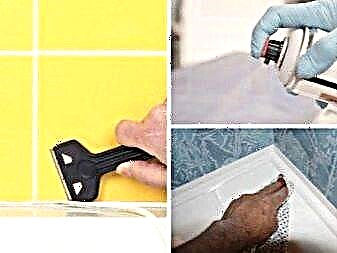
If you should remove the silicone sealant from the glass surfaces, choose white spirit or gasoline. This can be done very quickly and easily at home. The fabric should be moistened in a solvent and applied to glass; after a few minutes, the remaining silicone can be easily removed. When working with sealant, it is not uncommon for silicone to fall on clothing or remain on hand. While the glue has not yet hardened, the fabric is pulled and, picking up with a spatula, the silicone is removed. If the glue has absorbed into the fabric, vinegar, technical and medical alcohol should be taken to remove it. The selected liquid is poured onto the pollution, the place with the stain is rubbed with a toothbrush, and the glue will begin to roll out, forming lumps. After processing, wash clothes with your hands or in the washing machine.


If silicone gets on your skin, you can try to wash it off using a regular salt. A little salt is poured into a jar of warm water, in this solution you should hold your hand a little and then try to wipe off the pollution with a pumice stone. It is not always possible to get rid of the glue immediately, so this procedure is carried out several times during the day. You can try to soap the skin of your hands well with household soap, then rub them with a pumice stone. Using such a sanitary product, sealant can be removed from very small areas on the hands. You can get rid of sealant with vegetable oil. It is heated and applied to the skin, then soaped with soap and washed well. If all these methods do not help, you can use chemicals.










